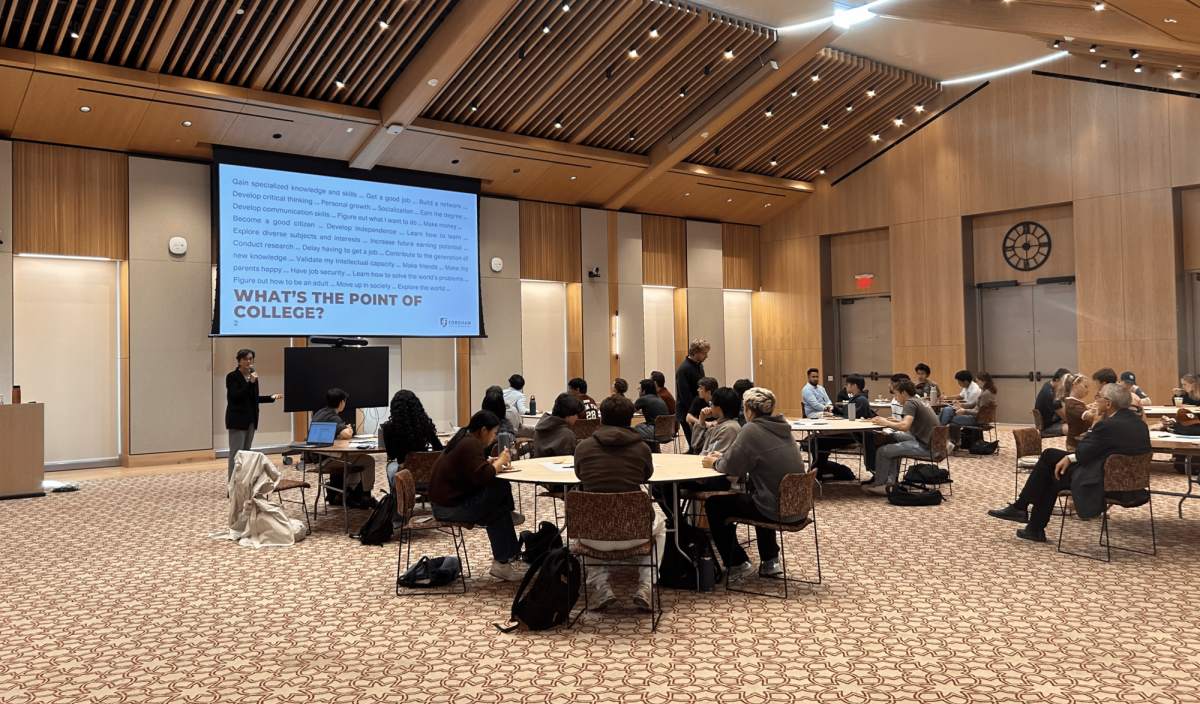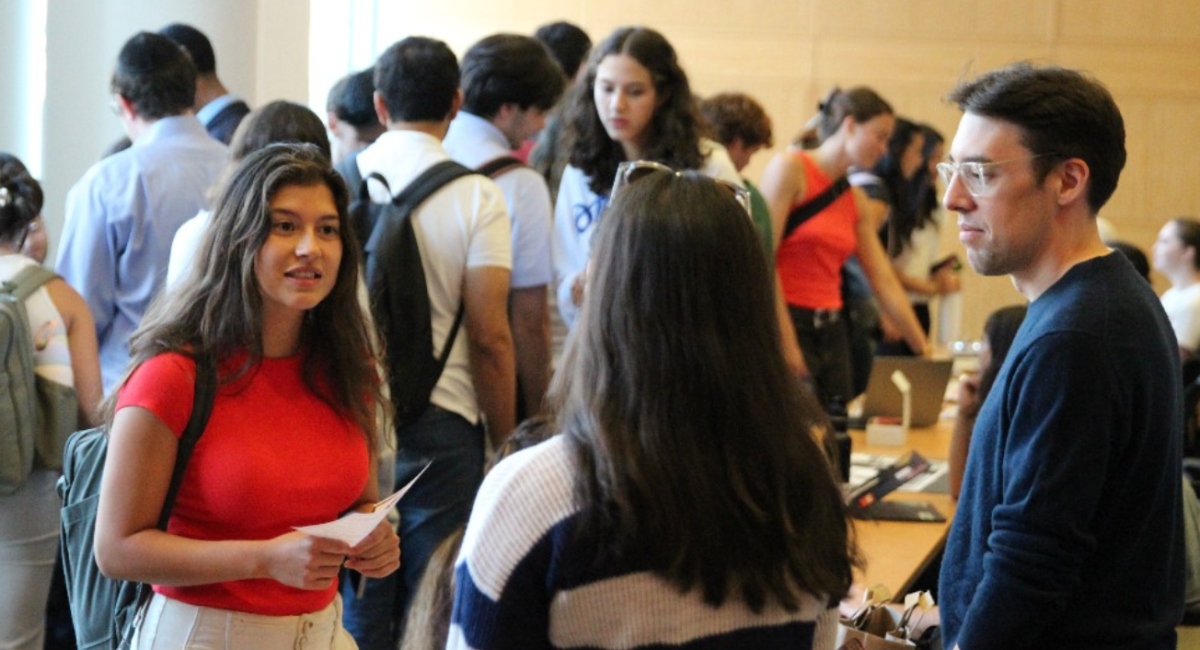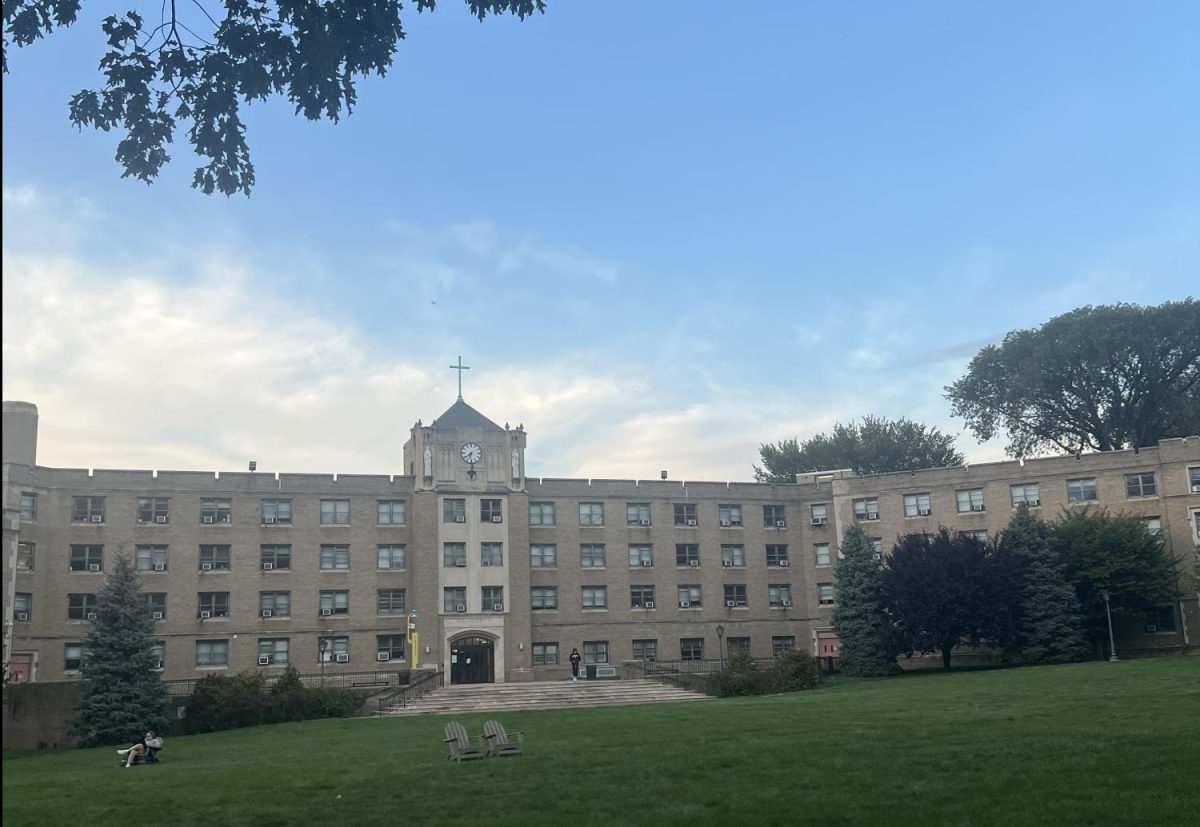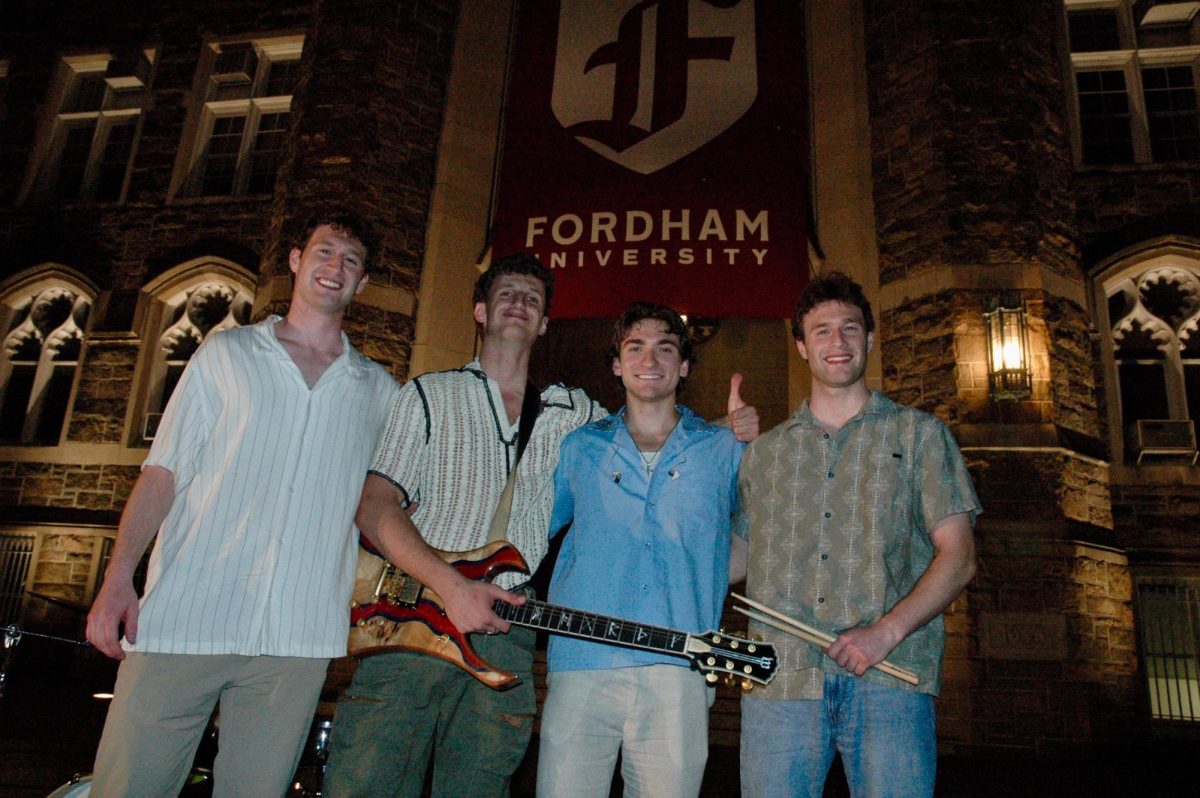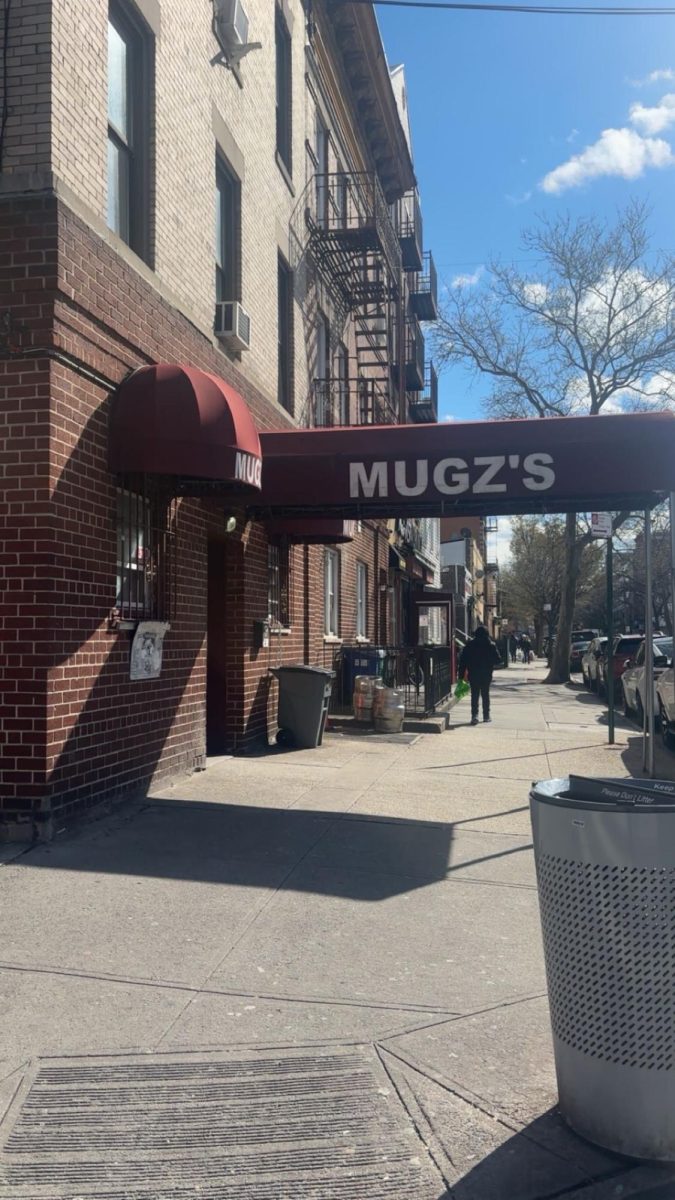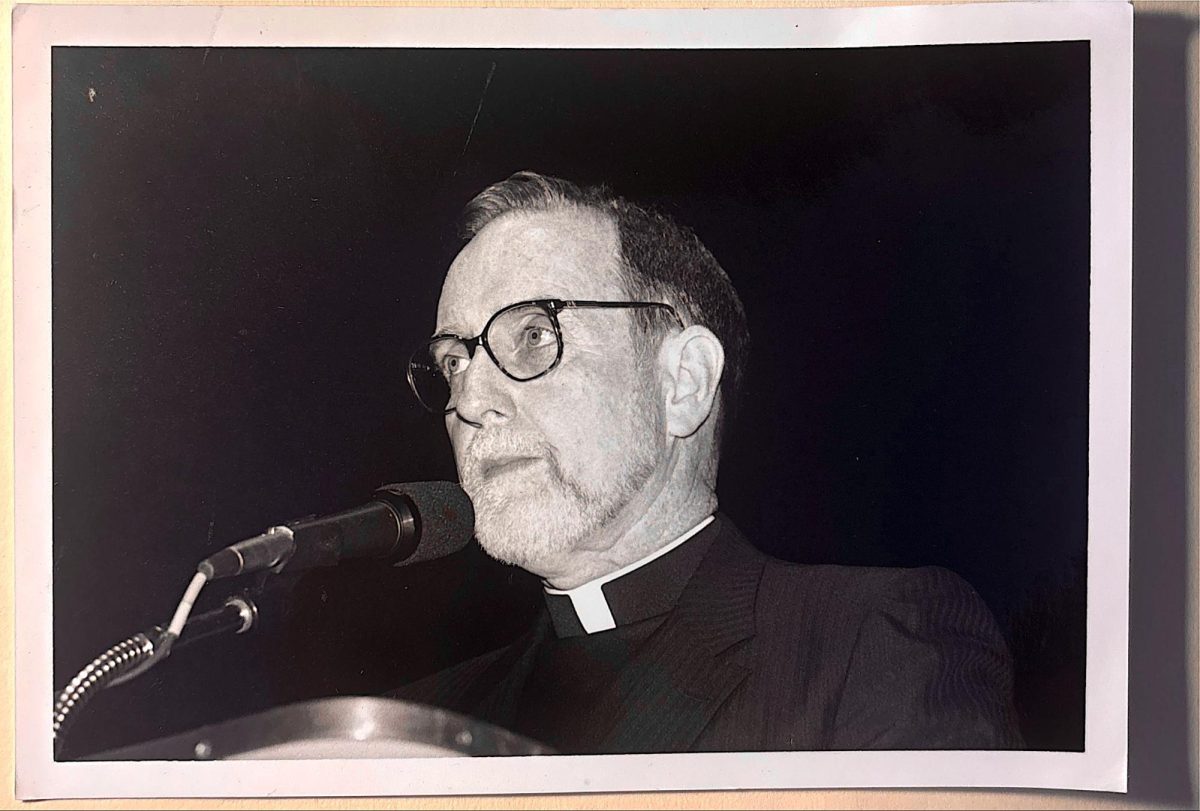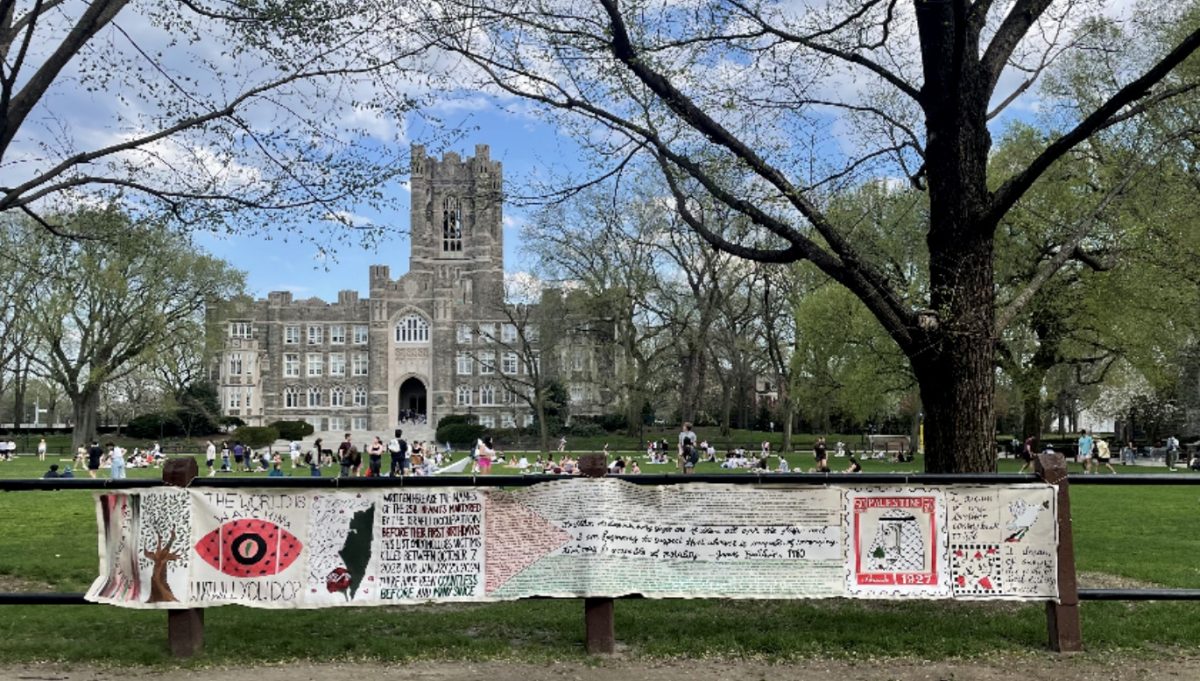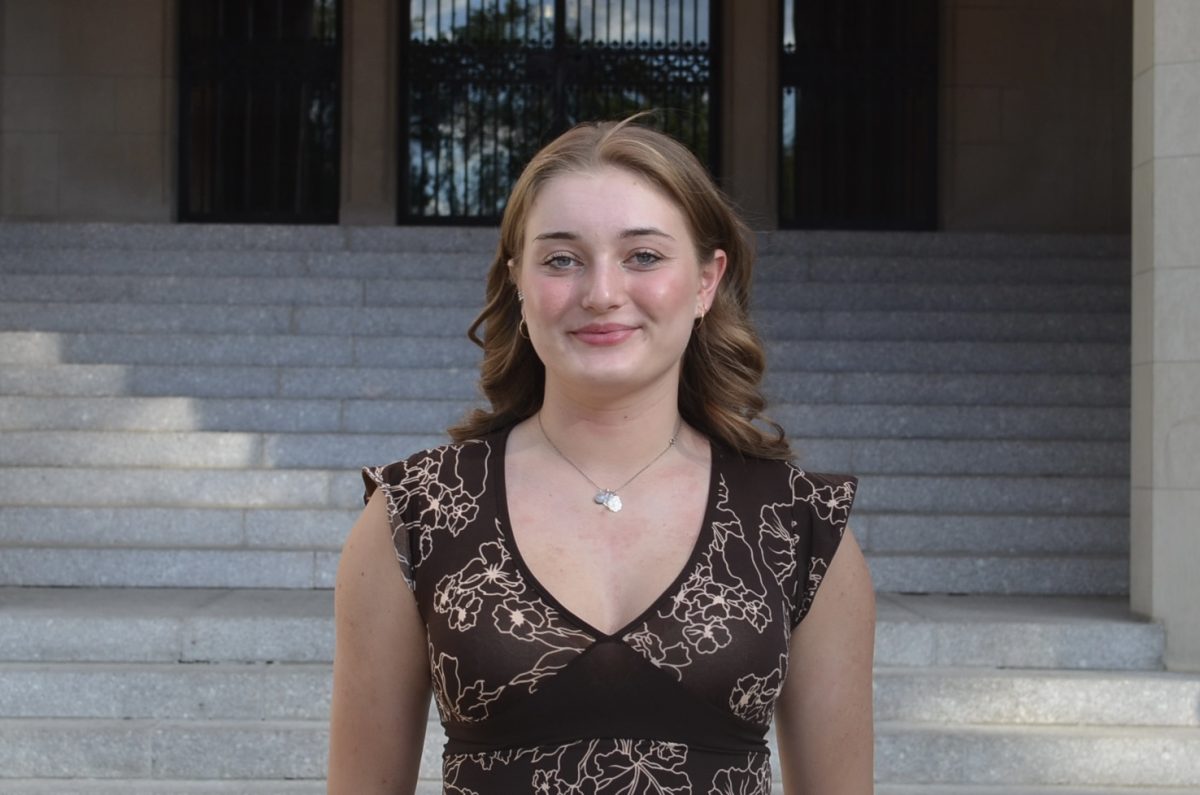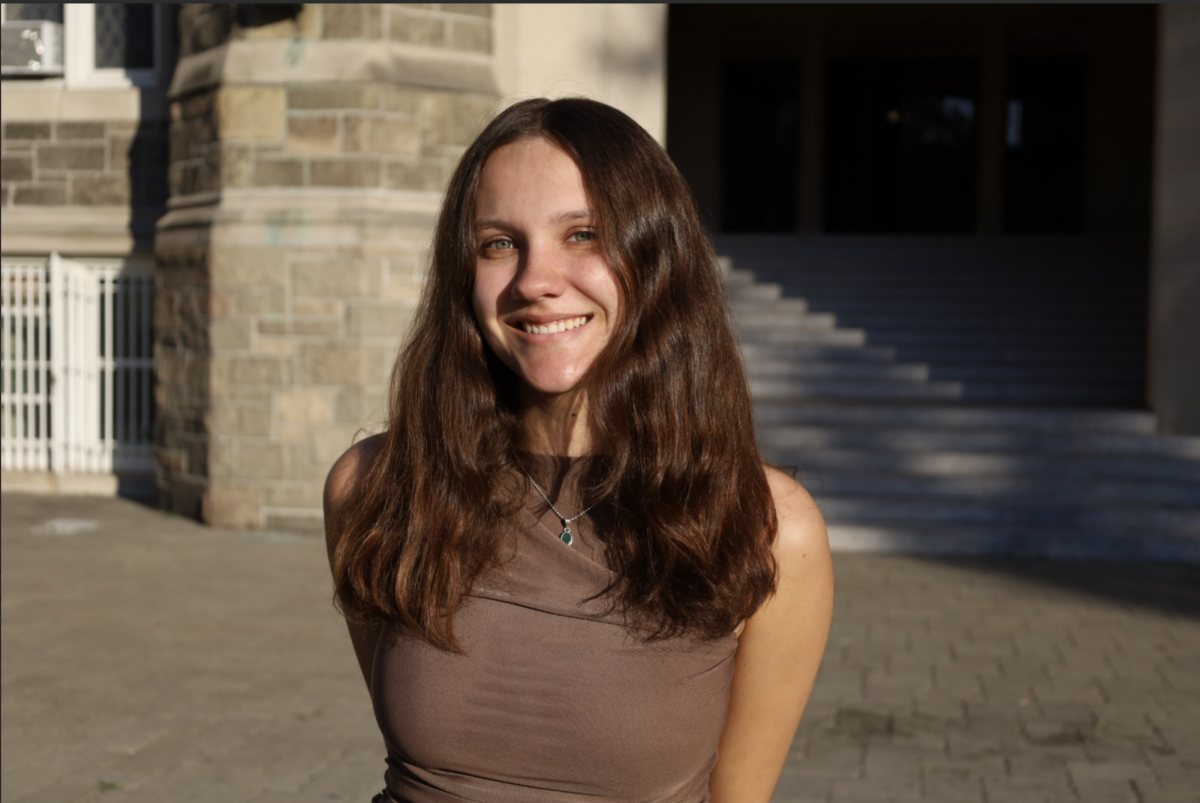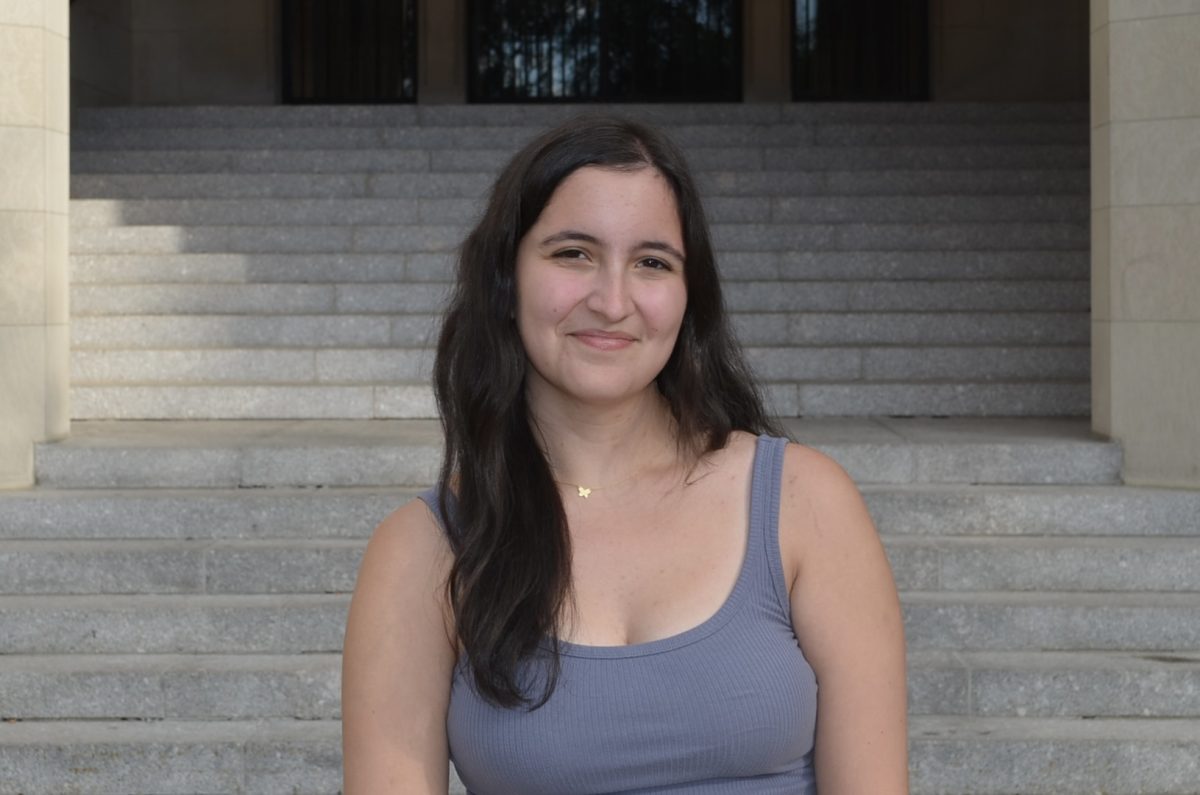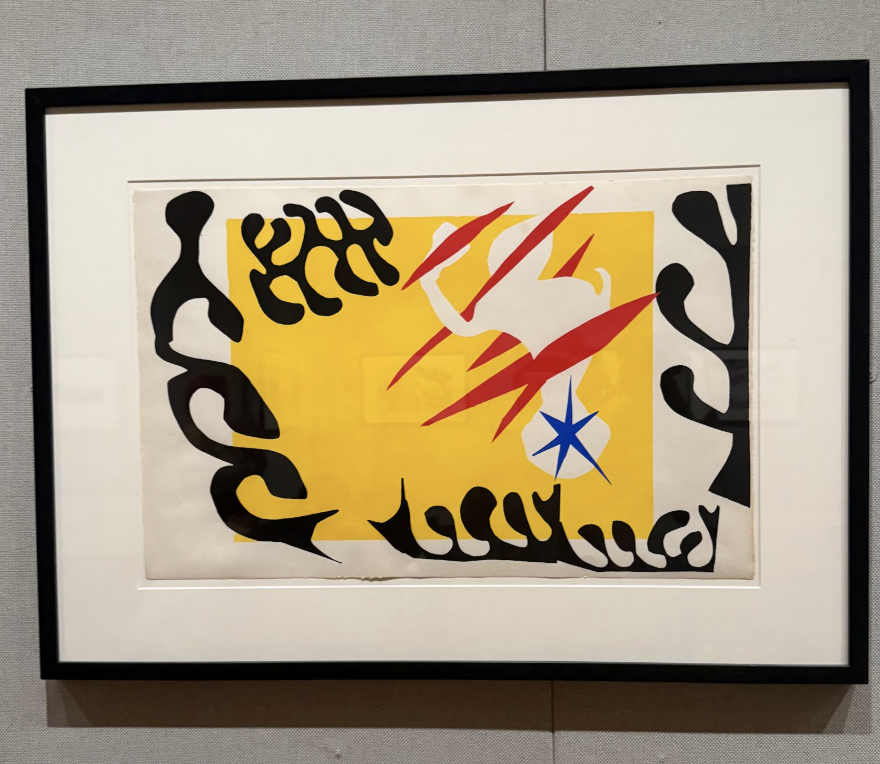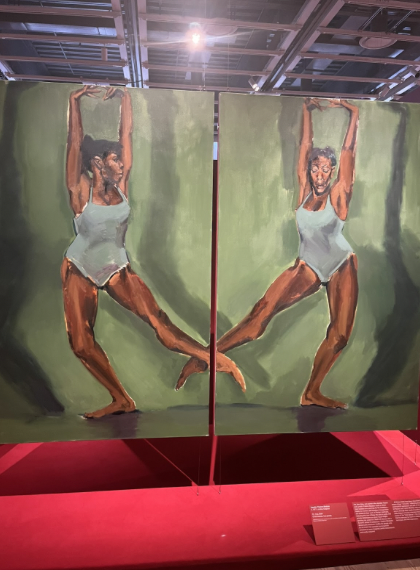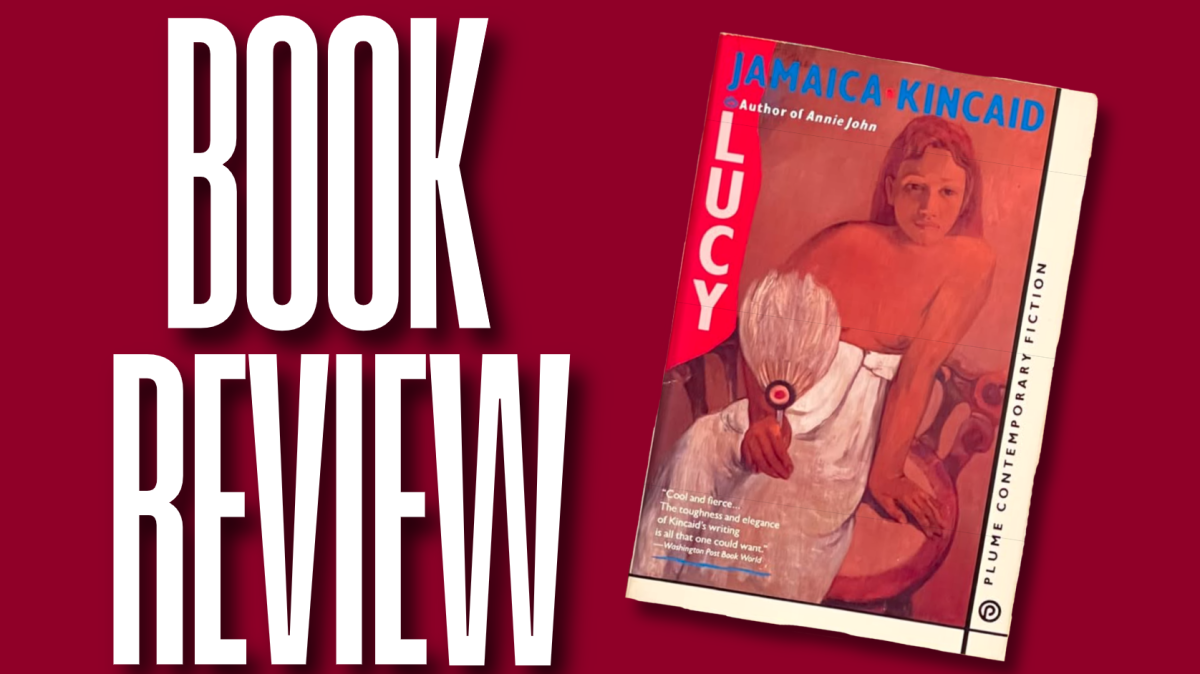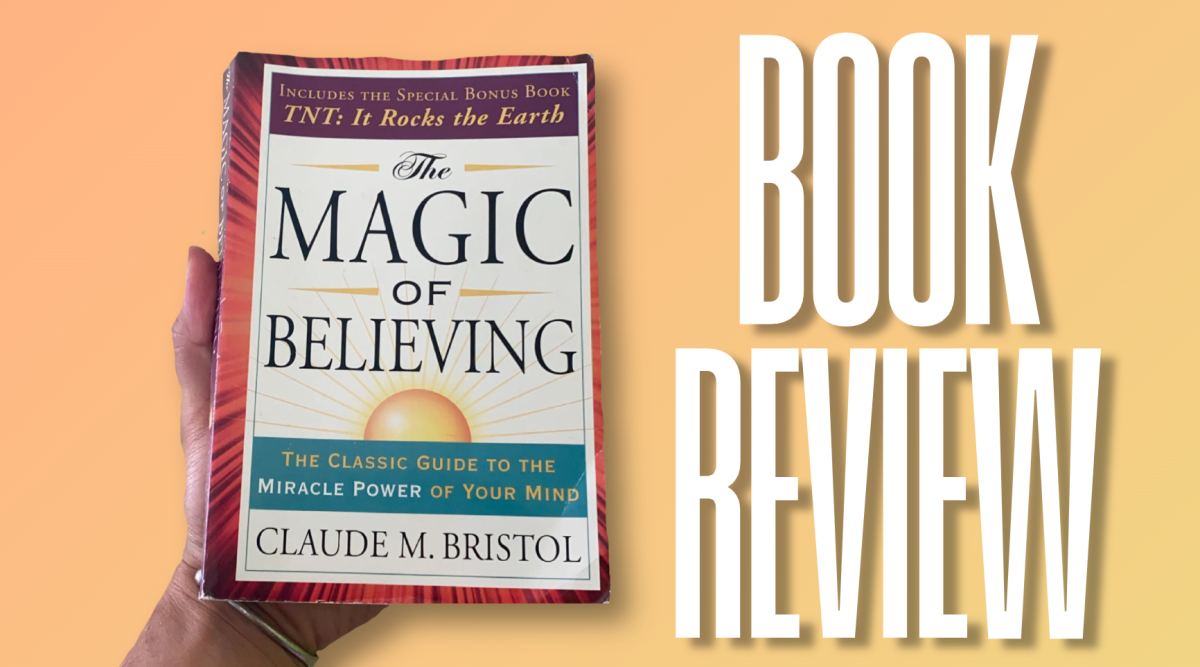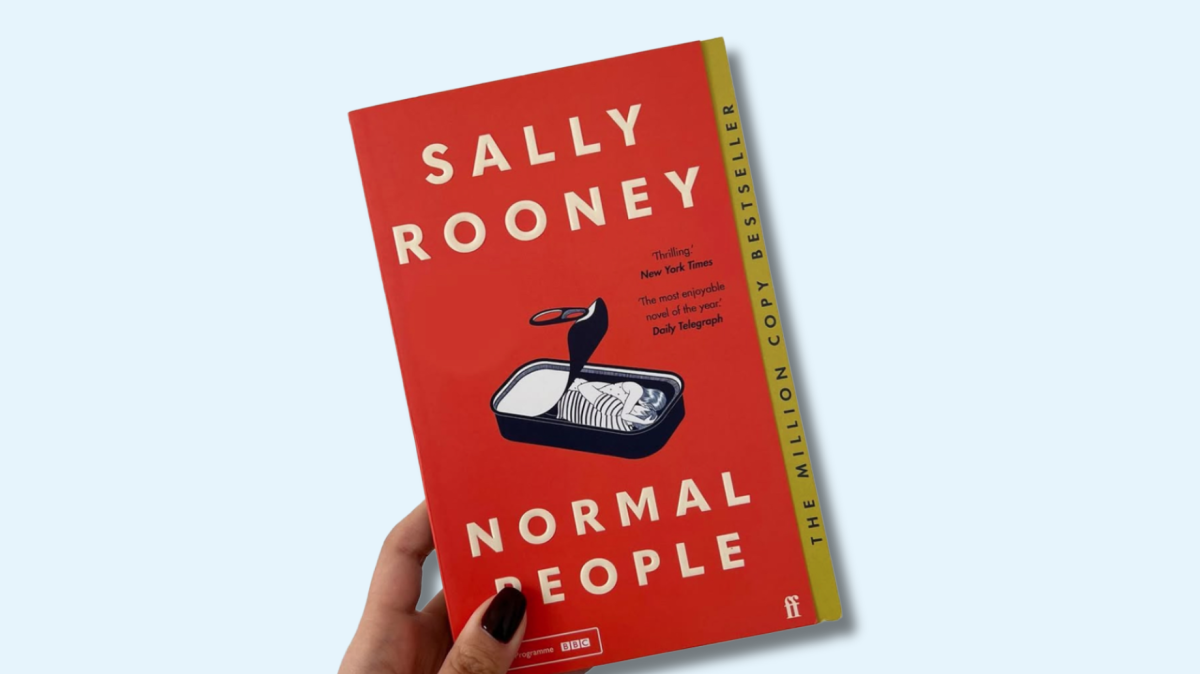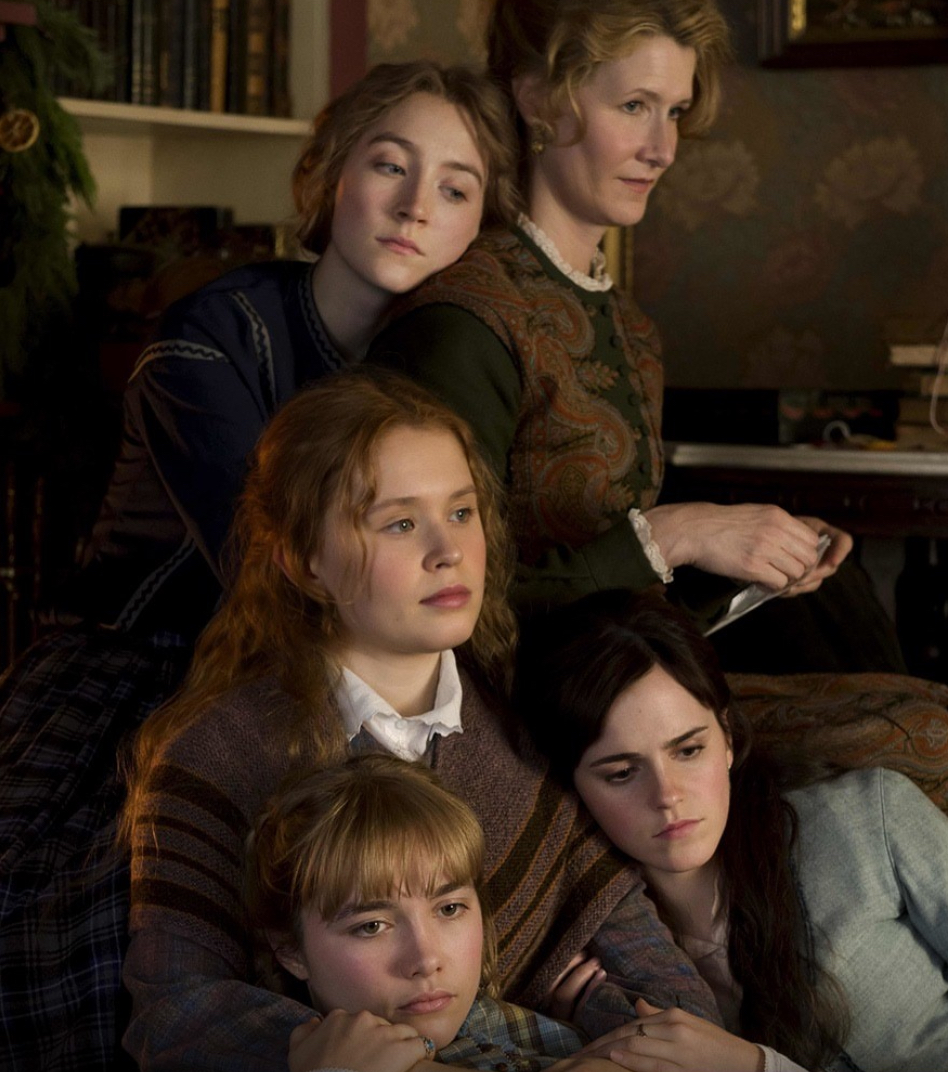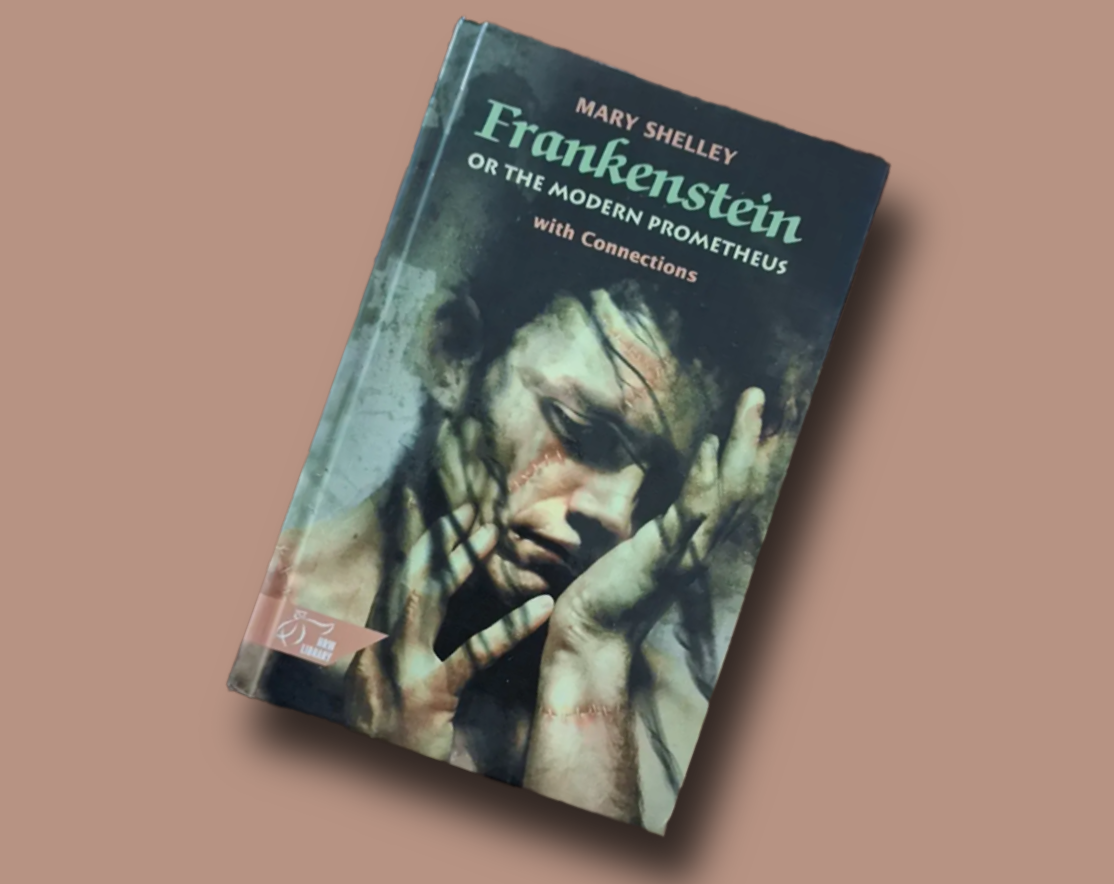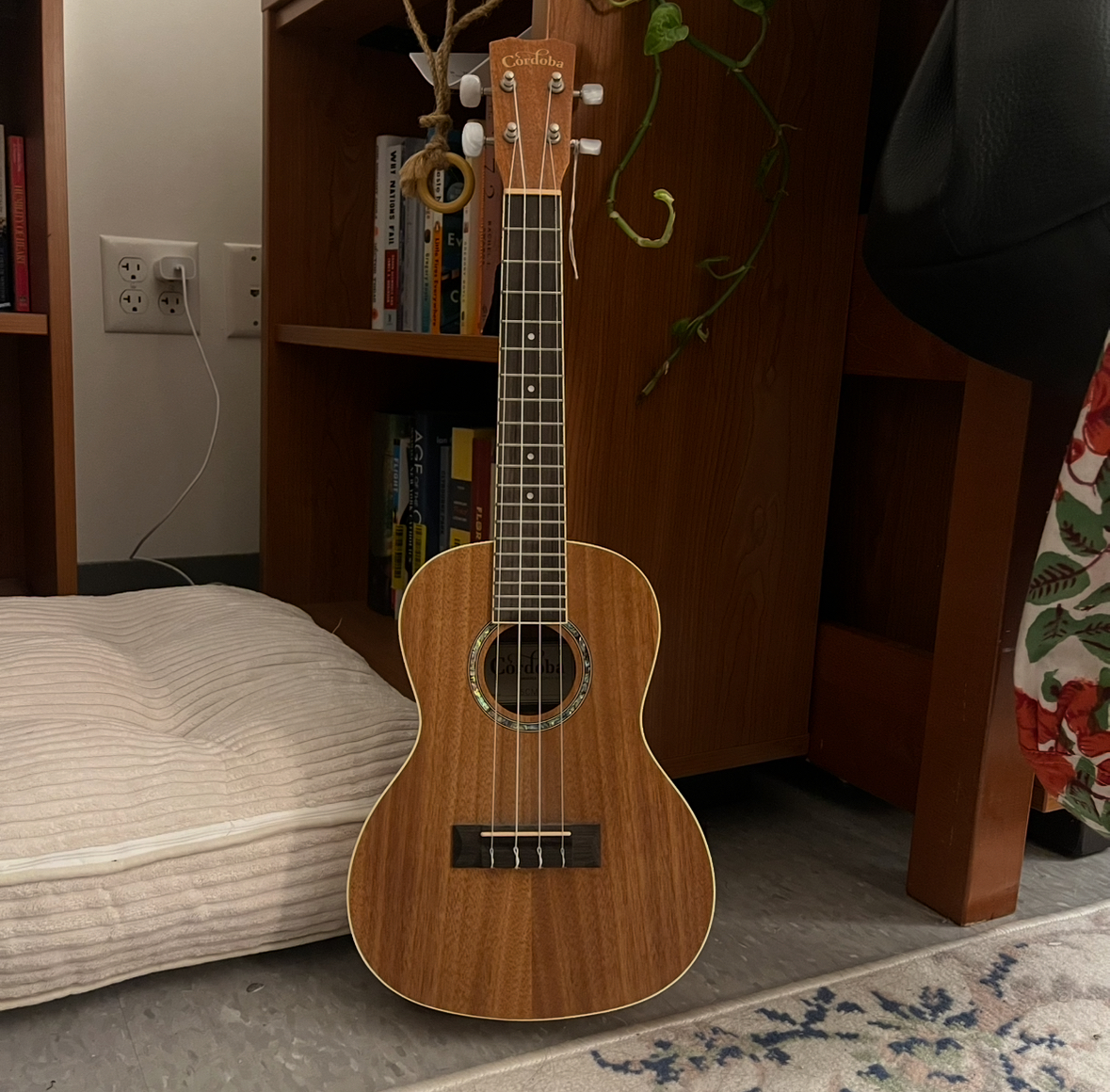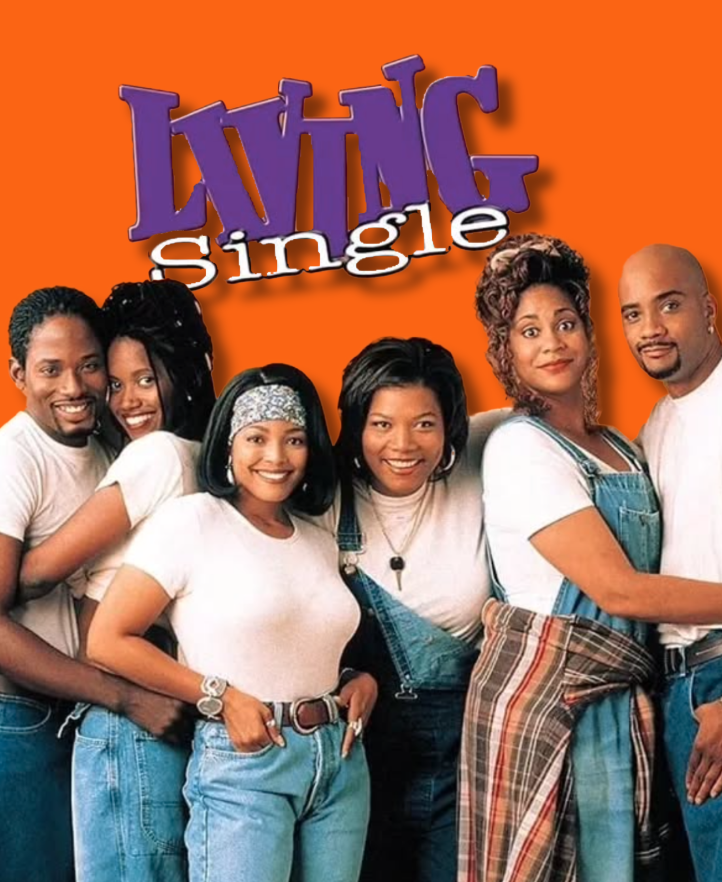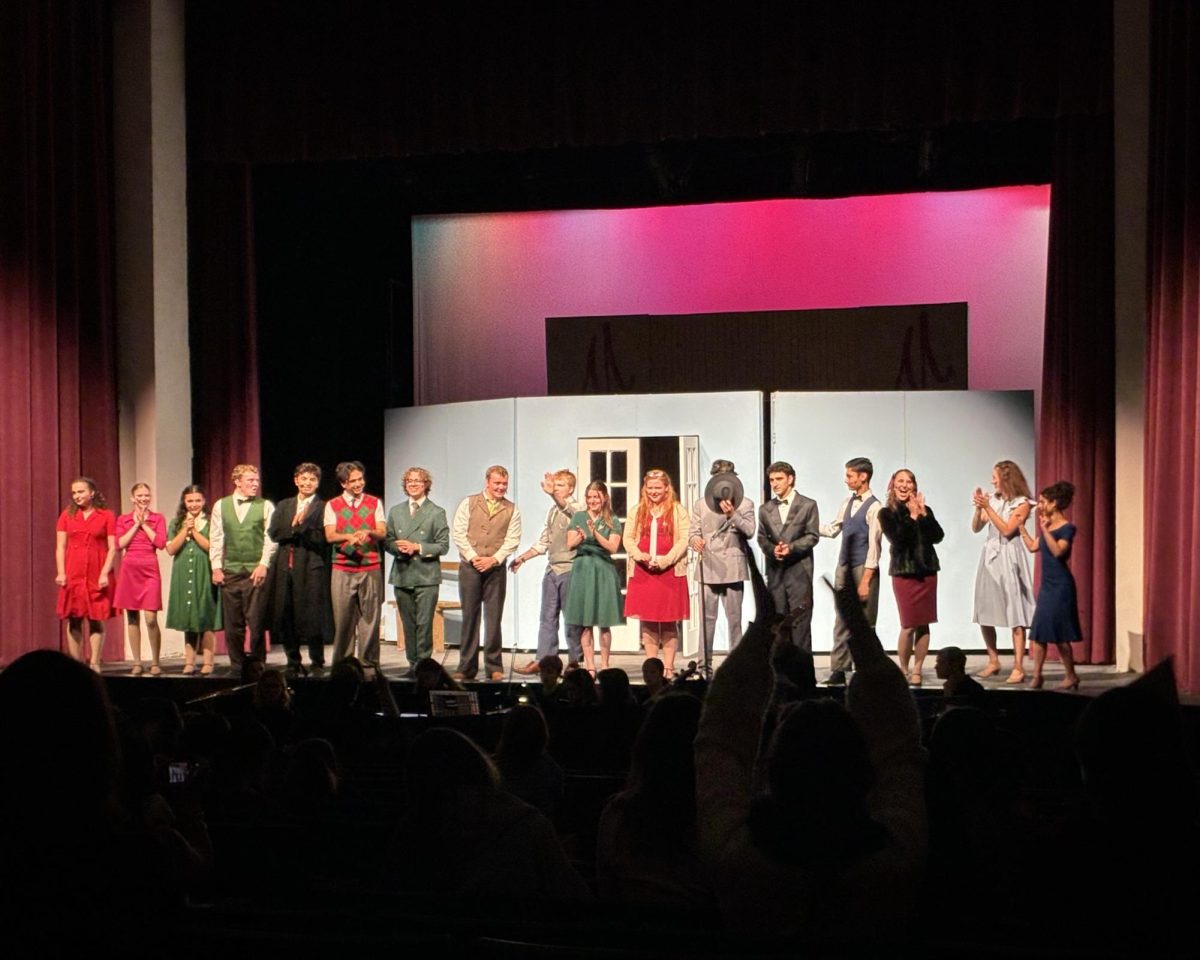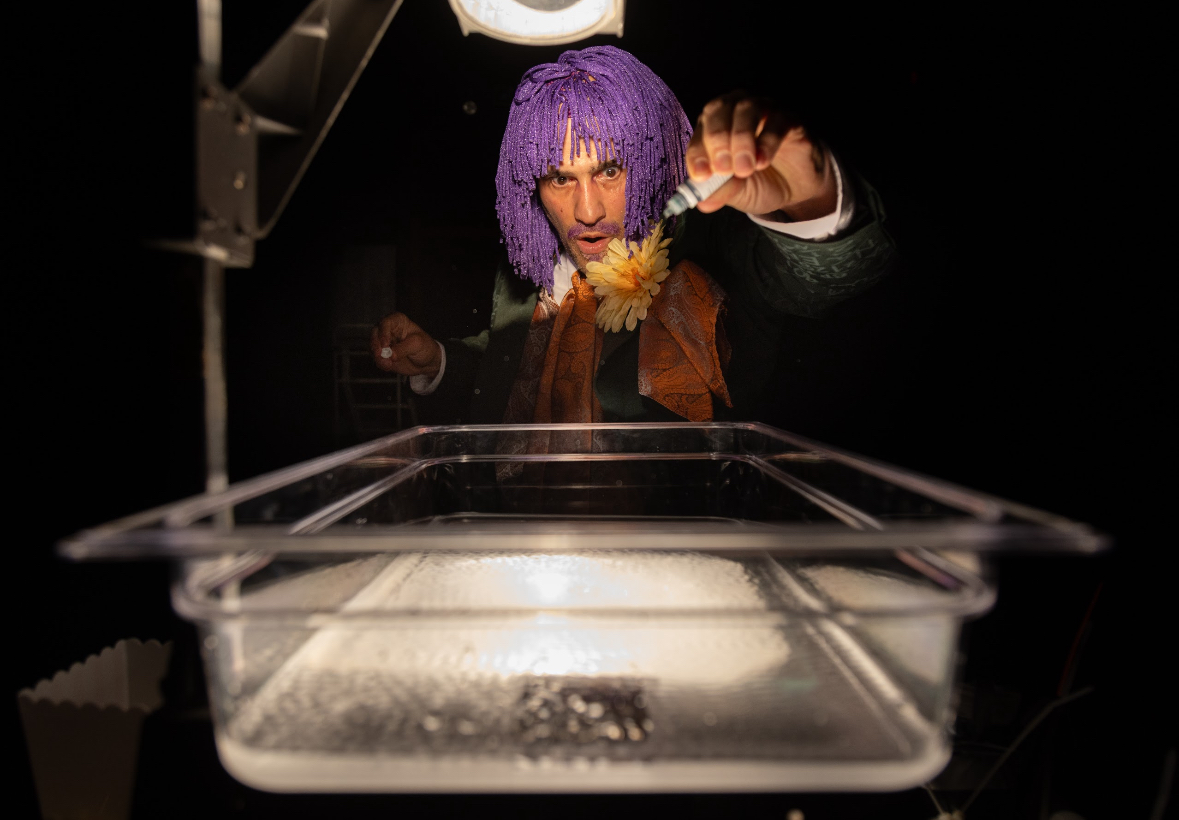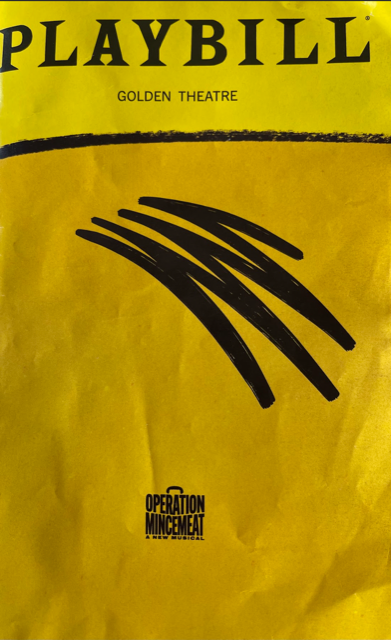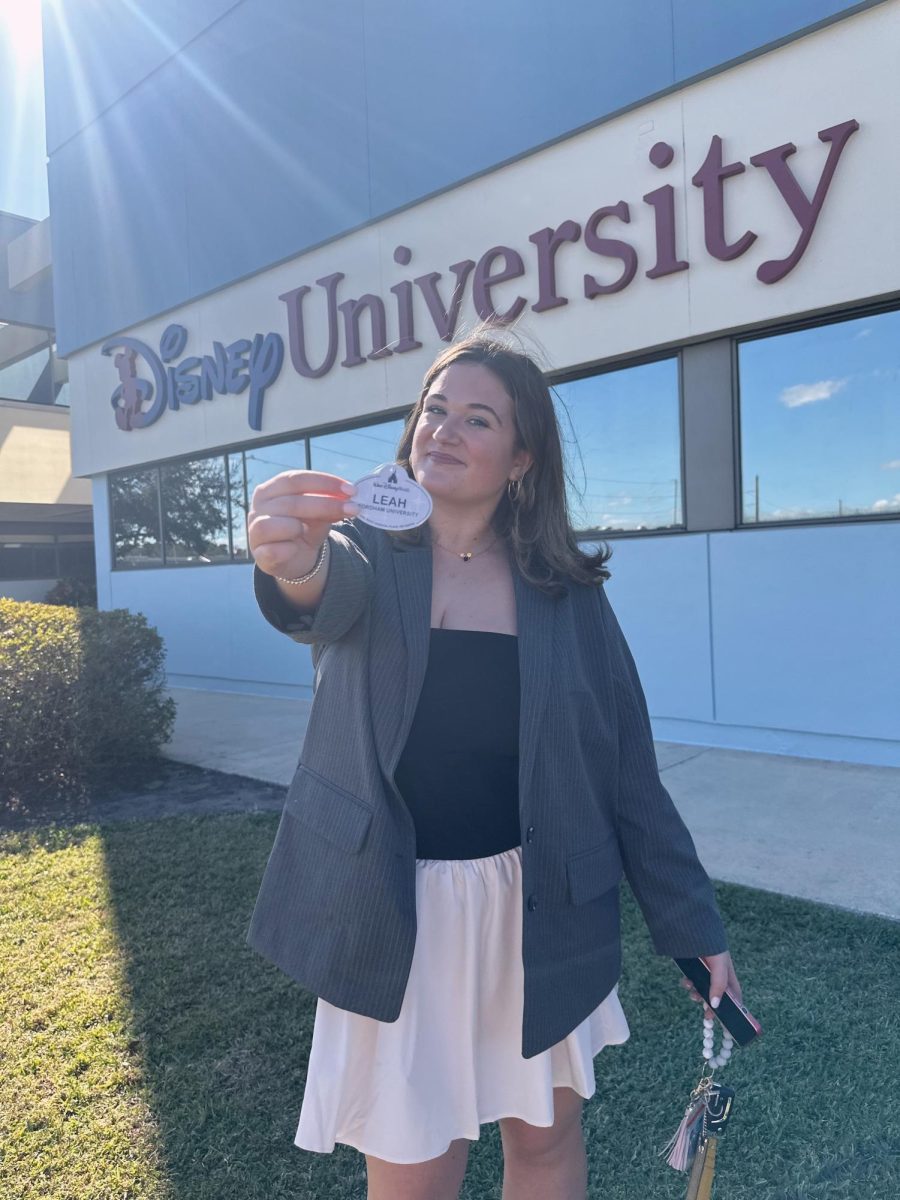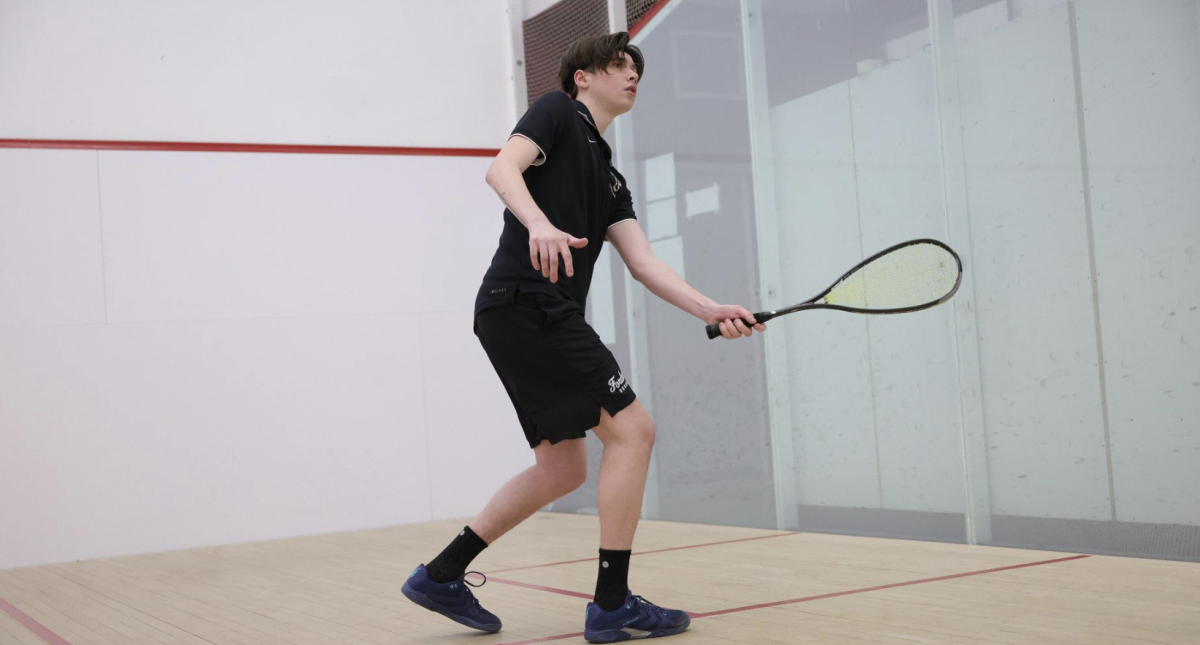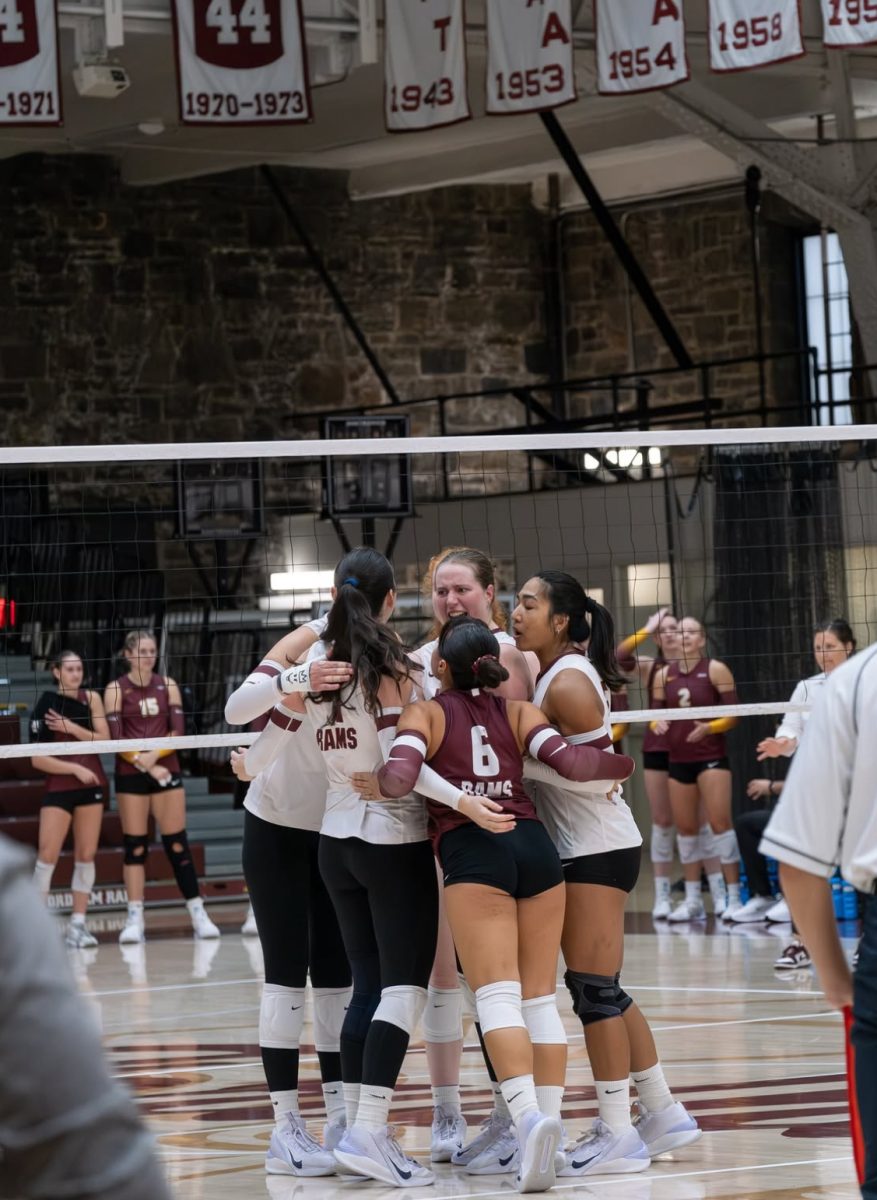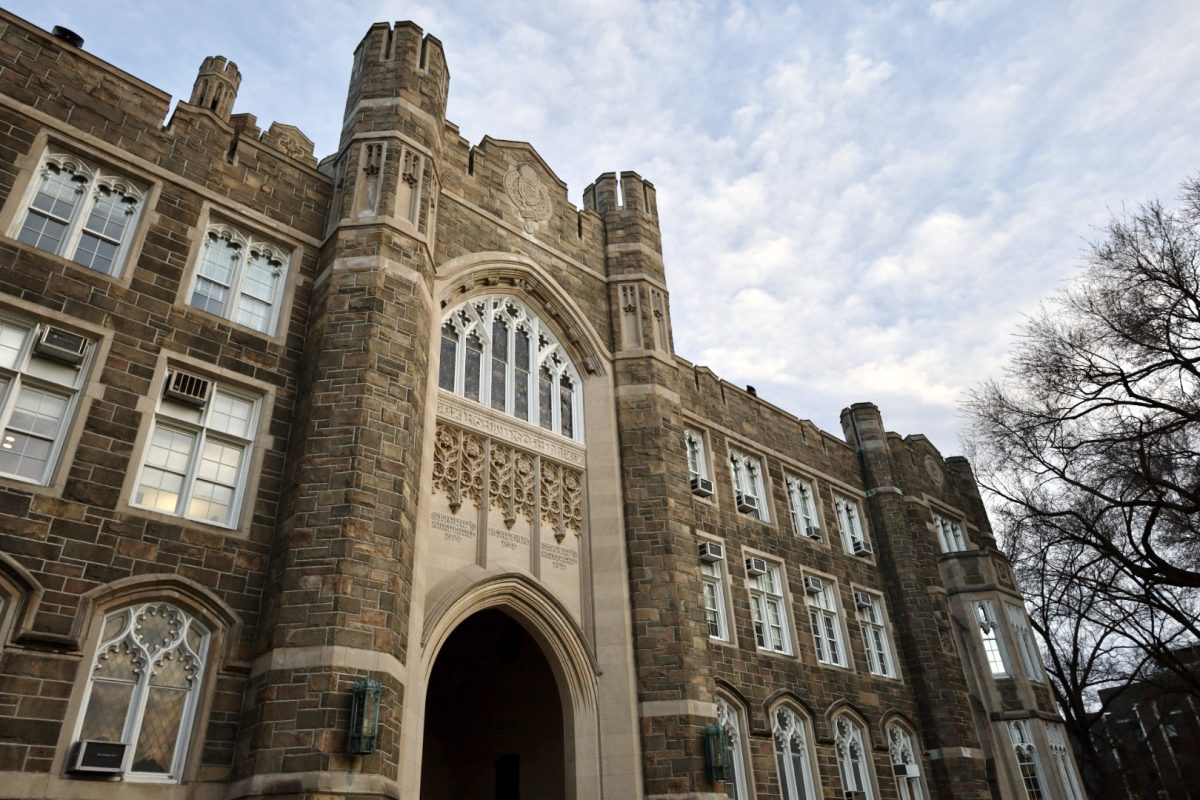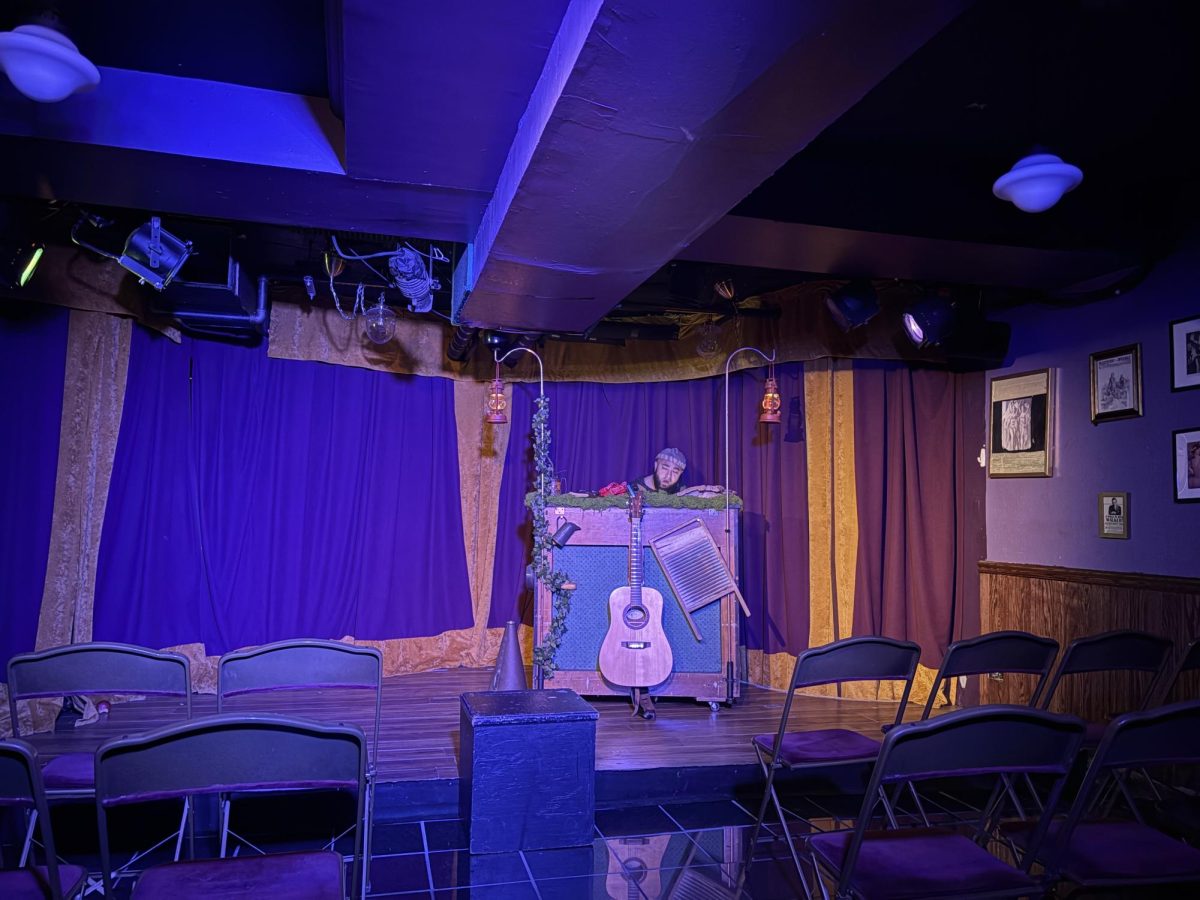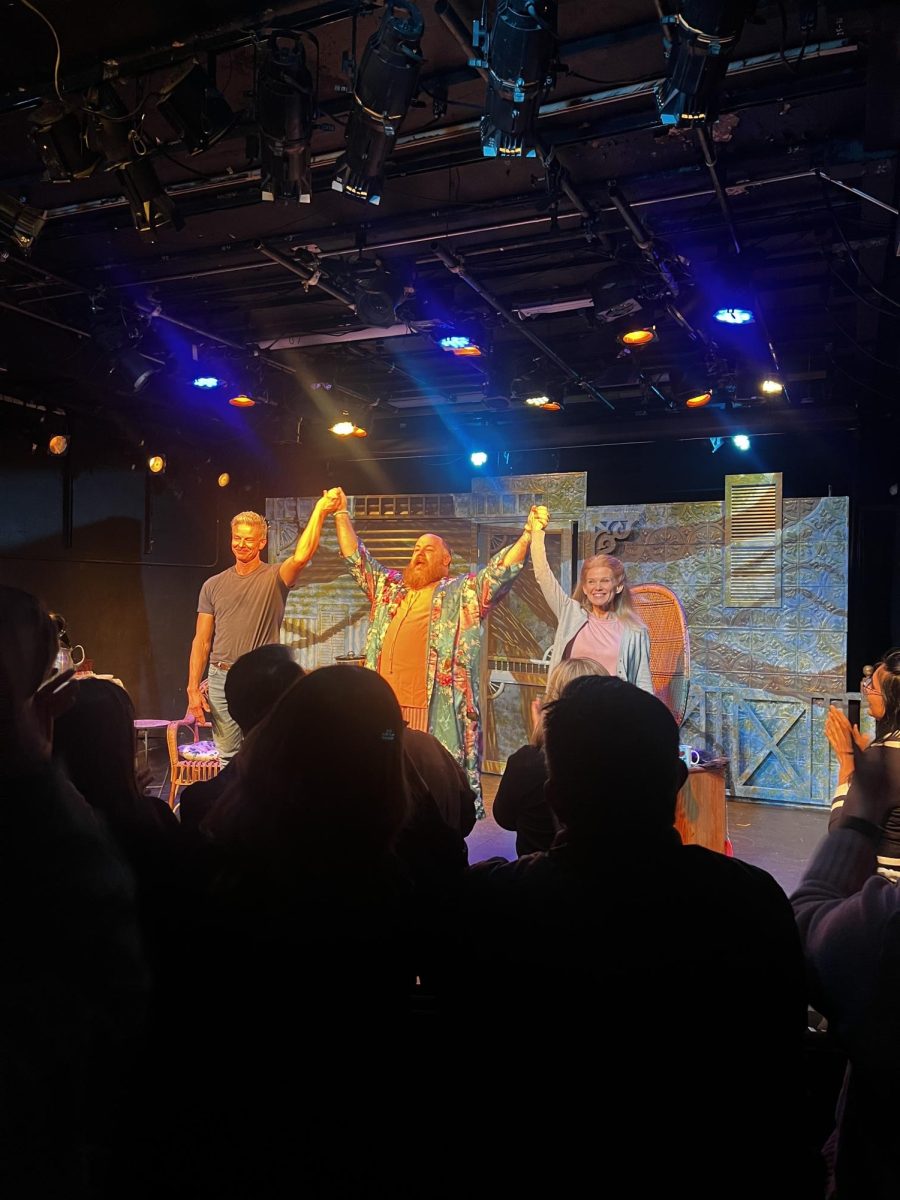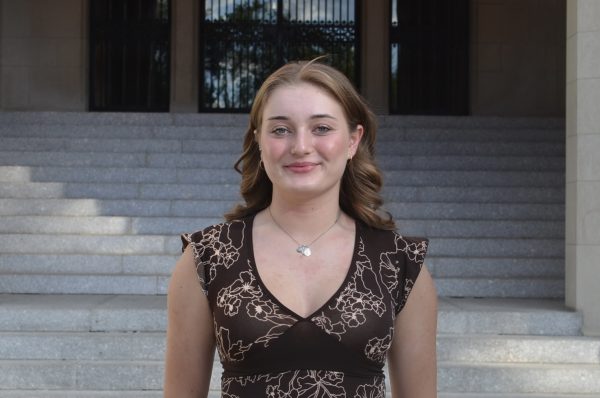Tick, tick, tick …
Despite seeing the Mimes and Mummers’ production of “The Children’s Hour” days ago, the sound of the ticks still remains with me, symbolizing the impact of this excellent performance and its lasting impression on the audience.
“The Children’s Hour” is a dark cautionary tale about the dangers of manipulating the truth to achieve an outcome suitable to you. The play opens with an excellent dance number by the “children” of the cast, and the actresses are shown playing normal juvenile games, while one specific child is in a sort of exile. That child turns out to be Mary, a spoiled but troubled kid who is the main antagonist. Throughout the first act, Mary bullies the other children into doing what she wants while constantly deceivings and rebelling against Karen and Martha, the founders and teachers of the school which Mary attends — Wright-Dobie School for Girls.
It is later revealed that Mary’s father killed himself, in a scene that shows rare genuine emotion from the child. Mary’s ultimate goal is to return and remain with her grandmother, the one person she seems to actually care for. She even goes so far as to run away from school and back to her grandmother’s house.
However, upon arriving, her grandmother tells her that she must return to school and can only stay for dinner. In an attempt to convince her grandmother to let her stay, Mary spins a tidbit of gossip into a full-blown lie, accusing Karen and Martha of acts of lesbianism in the presence of children. Her grandmother calls the parents of the other children at the school, resulting in Karen and Martha’s expulsion and the closure of the Wright-Dobie School. Karen and her fiancé (who is also Mary’s uncle, Joe), along with Martha, confront the grandmother and sue her for defamation. In an off-stage cut, Martha and Karen lose the lawsuit and descend into their new roles as social pariahs. Karen breaks off her engagement with Joe, and Martha has a crisis regarding her sexuality. The play ends with Martha proclaiming her love to Karen, apologizing for ruining their lives and taking her own life.
The story itself is very captivating, but what made it so impactful were the choices made by the actors and the production team.
Raine Rodriguez, FCRH ’28, who plays Mary, was unrecognizable as a college student. The force with which Rodriguez imitated child-like antics and behavior enhanced her role as a child. Rodriguez noted that “to convey the age of my character to the audience, I tried to fidget a lot and swing my legs/feet a lot during conversations … I’ve worked with kids for about 4 years, and I’ve noticed that young girls do that a lot.” When asked if it was a challenge to portray a child, Rodriguez shared that “it wasn’t difficult playing a child, due to the experience I have with kids, specifically young girls. I tried to emulate the mannerisms and behaviors I have witnessed for years.”
When Martha commits suicide at the end of the play, the last thing the audience sees before the stage goes dark is Mary, shocked and sobbing at the realization of what she has caused. When asked if Mary had spread the information maliciously, Rodriguez said that she didn’t think so.
“Although the lie ruins lives, at the end of the show, you can see how she truly regrets what she has done and did not understand that making up lies such as the one she spread, could have serious consequences,” she said. Rodriguez’s talent is put on full display during this scene, as she leaves the audience feeling bad for Mary, despite all that she had done.
Another standout performance was by Sofia Rava, FCRH ’28, who played Martha. Rava channeled true female rage through her performance, a rage so impactful that it was felt by the audience alongside her. “Female rage for me comes from a deep frustration with the feeling of powerlessness,” she said. “And honestly, in the times we are currently in, I just have to allow myself to feel the things that I’m pushing down all day,” she described, saying that she lets go of the barrier she keeps up to feel all of Martha’s anger and hopelessness” like it is her own. “It’s quite cathartic to be able to scream it all out on stage,” she added. Rava is not alone in that hopeless feeling, and although that current connection prompted the audience to align with her rage, it was truly her performance that allowed the audience to feel that way in the first place.
Lilah Spedding, GSB ’27, who stood opposite Rava as Karen, was anything but overshadowed. Despite Martha’s dominance in the plotline of the play, Spedding made Karen an equivalent character through her sheer talent on the stage. Spedding captivated the audience with her animated facial expressions and ability to switch from a kind, sweet teacher (with a voice that reminded me of Miss Honey from “Matilda”) to an angry, depressed woman as the plot caused her character’s world to crumble. And her scream. I have not experienced a sound quite like it ever before; the hair-raising, goosebump-inducing sound shocked me to my core.
“The first rehearsal with the scream, I wasn’t entirely sure what was going to come out … I was already crying and was feeling a lot of the weight Karen was feeling which definitely helped to make the scream so powerful,” Spedding said. “I tried to stay in character until I finished the scene, so much so that every night, Sofia and I would be backstage wiping our tears before going out to bow, keeping in character until the last blackout,” she continued. The professionalism of Spedding’s performance was obvious even before her statement, and it feels evident that despite Spedding’s marketing track, she could make it in the acting world.
This review would not be complete without the mention of the impactful choices of the production team, led by publicity manager Ian Colton, GSB ’27. From the reusing of couches to the 3D puzzle that actually conveyed the breaking of a vase, Colton and his team created a whole world with just a few set pieces and careful arrangements, one that didn’t feel like it was occurring on a university stage. It was an experience that set the viewer directly in the world, so much so that the plot felt like it was happening in real life.
If you didn’t get to see “The Children’s Hour,” take this review as a sign to never miss another production again. It’s like seeing a professional Broadway show for next to nothing, and it supports fellow students. As your time at Fordham University ticks away, it is never a waste to see a Mimes and Mummers show.

